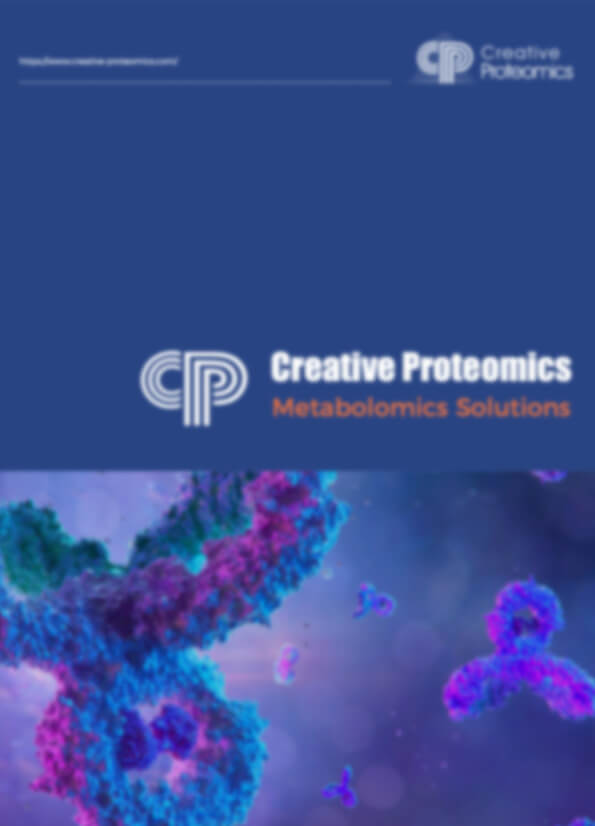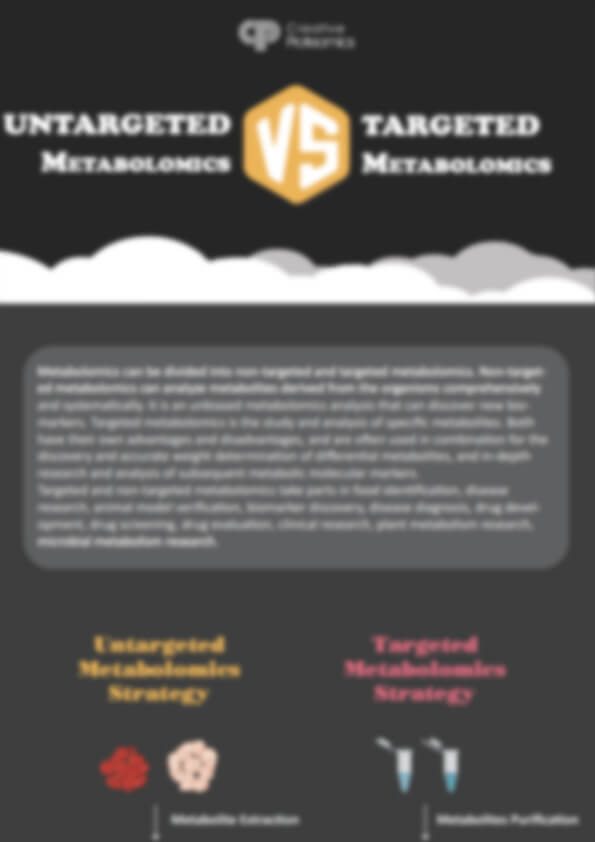Citric Acid Analysis Service
Creative Proteomics specializes in metabolomics analysis, leveraging LC-MS/MS and GC-MS platforms to deliver high-precision, high-throughput detection of citric acid and its metabolites. Our services encompass comprehensive profiling of TCA cycle intermediates (e.g., citric acid, α-ketoglutarate) and related metabolic pathways. We support pharmaceutical research, food industry quality control, and biomanufacturing, addressing critical needs in metabolic regulation, disease mechanism studies, and process optimization. Empowering data-driven research and industrial decision-making, we provide solutions for a wide range of applications.
Submit Your Request Now
×- What We Provide
- Advantages
- Technology Platform
- Sample Requirements
- FAQ
- Publications
What is Citric Acid?
Citric acid, a tricarboxylic acid with the formula C₆H₈O₇, is a key metabolite in the tricarboxylic acid (TCA) cycle, the central pathway for energy production in cells. Naturally found in citrus fruits, it is also produced industrially through microbial fermentation, primarily using Aspergillus niger.
This versatile compound is widely used in food and beverages as a flavor enhancer and preservative, in pharmaceuticals as a stabilizer, and in cleaning products for its chelating properties. Its three carboxyl groups make it an effective acidulant and pH adjuster, while its solubility in water and ethanol enhances its applicability in various formulations.
At Creative Proteomics, we provide precise citric acid analysis services to support research, quality control, and process optimization across industries. Our advanced techniques ensure accurate quantification and profiling of citric acid and its related metabolites.
 Schematic representation of CA metabolism in plants (Tahjib-Ul-Arif et al., 2021)
Schematic representation of CA metabolism in plants (Tahjib-Ul-Arif et al., 2021)
Citric Acid Analysis Service Offered by Creative Proteomics
- Absolute Quantification of Citric Acid: Precise measurement using isotope-labeled standards.
- TCA Cycle Metabolite Profiling: Simultaneous analysis of citric acid, isocitrate, α-ketoglutarate, succinate, fumarate, and malate.
- Customized Panels: Targeted assays for specific pathways, such as lipid synthesis or amino acid metabolism.
- High-Throughput Screening: Scalable solutions for large-scale studies in drug discovery.
Detectable Citric Acid-Related Metabolites
| Metabolite | Molecular Formula | Function in the TCA Cycle |
|---|---|---|
| Citric Acid | C₆H₈O₇ | Primary intermediate; regulates metabolic flux |
| Isocitric Acid | C₆H₈O₇ | Converts to α-Ketoglutarate via oxidative decarboxylation |
| α-Ketoglutarate | C₅H₆O₅ | Central metabolite for amino acid synthesis and energy production |
| Succinyl-CoA | C₂₅H₄₀N₇O₁₉P₃S | High-energy intermediate; converts to succinate |
| Succinic Acid | C₄H₆O₄ | Participates in the electron transport chain via succinate dehydrogenase |
| Fumaric Acid | C₄H₄O₄ | Intermediate formed during succinate oxidation |
| Malic Acid | C₄H₆O₅ | Precursor to oxaloacetate, essential for gluconeogenesis |
| Oxaloacetate | C₄H₄O₅ | Reacts with acetyl-CoA to regenerate citric acid |
| Acetyl-CoA | C₂₃H₃₈N₇O₁₇P₃S | Reacts with oxaloacetate to initiate the TCA cycle |
Advantages of Citric Acid Assay
- Multi-Platform Integration – Combining LC-MS/MS (SCIEX Triple Quad™ 6500+) and GC-MS (Agilent 7890B) for comprehensive metabolite coverage in complex matrices.
- Ultra-High Sensitivity – Detection limits as low as 0.1 ng/mL, with isotope-labeled standards ensuring<5% inter-batch variability.
- Targeted & Comprehensive Panels – Focused TCA cycle analysis or extended profiling linking to amino acid and lipid metabolism.
- Optimized Workflows – Adaptive protocols for low-volume or degraded samples, ensuring accurate quantification.
- High Throughput & Fast Turnaround – Up to 1,000 samples/month with results in 7–10 business days.
- Data Integrity & Insights – Retention time matching, MS/MS spectral libraries, and KEGG-based pathway analysis for actionable metabolic insights.
Technology Platforms for Citric Acid Analysis Service
Liquid Chromatography-Tandem Mass Spectrometry (LC-MS/MS)::
- Instrument: Agilent 1290 UHPLC coupled with 6495C Triple Quadrupole
- Column: Waters ACQUITY UPLC® BEH C18 (1.7 µm, 2.1 × 100 mm)
- Dynamic Range: 0.1–500 µg/mL
Gas Chromatography-Mass Spectrometry (GC-MS):
- Instrument: Agilent 7890B/5977A GC-MS
- Derivatization: MSTFA for enhanced volatility

Agilent 7890B-5977A (Figure from Agilent)

Agilent 6495C Triple Quadrupole (Figure from Agilent)
Sample Requirements for Citric Acid Analysis Service
| Sample Type | Minimum Required Amount | Recommended Amount | Storage Conditions | Shipping Conditions |
|---|---|---|---|---|
| Serum/Plasma | 100 µL | 200 µL | -80°C | Dry ice |
| Whole Blood | 200 µL | 500 µL | -80°C (after centrifugation) | Dry ice |
| Urine | 500 µL | 1 mL | -80°C | Dry ice |
| Cell Culture Supernatant | 200 µL | 500 µL | -80°C | Dry ice |
| Tissue (e.g., liver, muscle) | ≥50 mg | 100 mg | Flash frozen, -80°C | Dry ice |
| Fermentation Broth | 1 mL | 2 mL | -80°C | Dry ice |
| Food/Beverage Samples | 1 g or 1 mL | 5 g or 5 mL | Refrigerated/Frozen | Ice packs/Dry ice |
| Feces | 50 mg | 100 mg | -80°C | Dry ice |
| Saliva | 200 µL | 500 µL | -80°C | Dry ice |
| CSF (Cerebrospinal Fluid) | 100 µL | 200 µL | -80°C | Dry ice |
| Plant Extracts | 500 µL | 1 mL | -80°C | Dry ice |
Applications of Citric Acid Assay Service
Biomedical & Clinical Research
Investigating metabolic disorders, mitochondrial dysfunction, and citric acid cycle abnormalities in diseases like cancer, diabetes, and neurodegenerative conditions.
Food & Beverage Quality Control
Ensuring citric acid levels comply with regulatory standards in beverages, processed foods, and dietary supplements.
Industrial Fermentation & Biotechnology
Monitoring citric acid production in microbial fermentation and optimizing bioprocess efficiency.
Agricultural & Plant Science
Studying plant metabolism, stress responses, and soil composition for improved crop yields.
Pharmaceutical Development
Assessing citric acid as an excipient, stabilizer, or chelating agent in drug formulations.
Environmental & Wastewater Analysis
Detecting citric acid as a biodegradable chelator in industrial effluents and ecological studies.
Demo
FAQ of Citric Acid Analysis Service
What data will I receive in the report?
Reports include:
- Absolute quantification of citric acid and related metabolites.
- Quality control metrics (e.g., CV<5% for replicates).
- Pathway mapping with KEGG annotations.
- Raw data files (MS spectra, chromatograms) for independent validation.
Can you analyze citric acid in complex matrices like food or fermentation products?
Yes. Our methods are validated for challenging matrices, including fermentation broths, plant extracts, and processed foods, with protocols to remove interfering compounds (e.g., polysaccharides, lipids).
Do you provide customized metabolite panels?
Absolutely. We offer tailored panels focusing on specific pathways (e.g., TCA cycle + amino acid metabolism) or industrial needs (e.g., citric acid production optimization in microbial cultures).
How do I prepare and ship samples?
Samples should be snap-frozen in liquid nitrogen (tissue/cells) or stored at –80°C (biofluids). Shipments must use dry ice with proper insulation. Detailed protocols are provided upon project initiation.
What distinguishes your service from others?
- Dual-platform validation (LC-MS/MS + GC-MS) for accuracy.
- Broad dynamic range (0.1–500 µg/mL) to capture baseline and stress-induced metabolite levels.
- Industry-tailored workflows for pharmaceuticals, food science, and biomanufacturing.
Learn about other Q&A.
Citric Acid Analysis Service Case Study
Publications
Here are some of the metabolomics-related papers published by our clients:

- A non-probiotic fermented soy product reduces total and ldl cholesterol: A randomized controlled crossover trial. 2021. https://doi.org/10.3390/nu13020535
- Resting natural killer cell homeostasis relies on tryptophan/NAD+ metabolism and HIF‐1α. 2023. https://doi.org/10.15252/embr.202256156
- Enhance trial: effects of NAD3® on hallmarks of aging and clinical endpoints of health in middle aged adults: a subset analysis focused on blood cell NAD+ concentrations and lipid metabolism. 2022. https://doi.org/10.3390/physiologia2010002
- Function and regulation of a steroidogenic CYP450 enzyme in the mitochondrion of Toxoplasma gondii. 2023. https://doi.org/10.1371/journal.ppat.1011566
References
- Tahjib-Ul-Arif, Md, et al. "Citric acid-mediated abiotic stress tolerance in plants." International journal of molecular sciences 22.13 (2021): 7235. https://doi.org/10.3390/ijms22137235
- Tahir, NOOR IDAYU, et al. "Identification of oil palm (Elaeis guineensis) spear leaf metabolites using mass spectrometry and neutral loss analysis." J. Oil Palm Res 25.1 (2013): 72-83.
- Li, Chunyin, et al. "Fully biobased adhesive from glucose and citric acid for plywood with high performance." ACS Applied Materials & Interfaces 14.20 (2022): 23859-23867. https://doi.org/10.1021/acsami.2c02859











